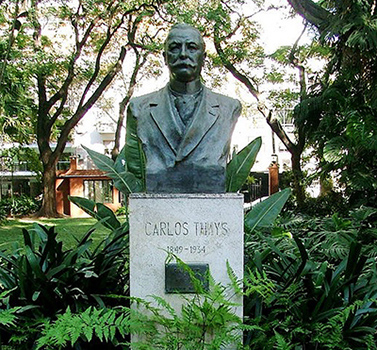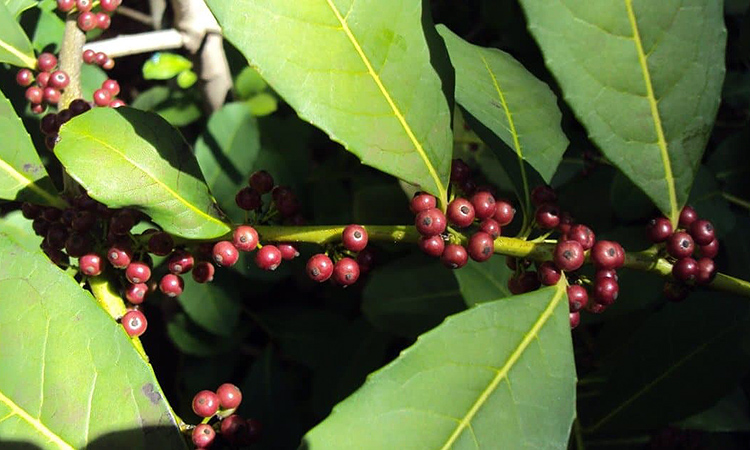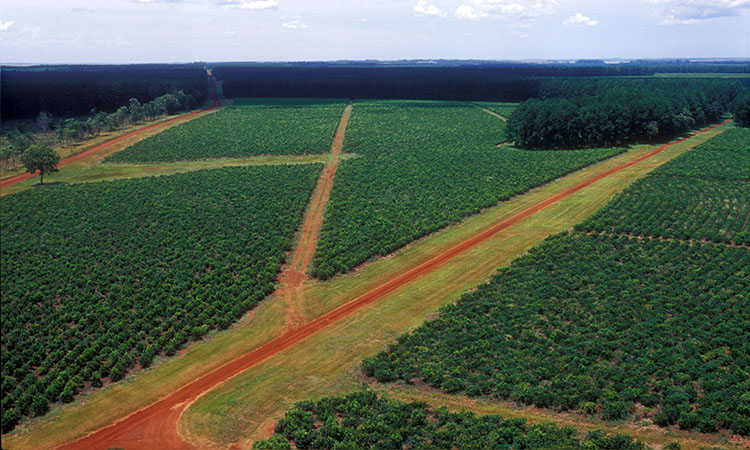The industrialization of “Yerba mate”, the other legacy of Carlos Thays
Did you know that thanks to the French landscape designer Carlos Thays, today Argentina is the main producer of yerba mate in the world?
Carlos Thays, a landscape engineer born in Paris in 1849 under the name of Jules Charles Thays, is mainly known in our country for the many parks he has designed and the streets he has decorated with native trees, all over Argentina’s biggest cities. Indeed, his nicknamed “el padre de las sombras” (the father of the shade) is still used. But he is also the one who made Argentina the main producer, and consumer, of yerba mate /Sher-bah Mah- teh/ tea in the world.

Two years after migrating to Argentina in 1889, Carlos Thays became the Director of Parks and Walks in Buenos Aires. For nearly 30 years, he created and remodeled the main green spaces of the capital but also the majority of the other big cities of Argentina, while planting more than 150,000 trees in the streets. He also designed and built many private parks such as Estancias El Flamenco and La Porteña in San Antonio de Areco.

In 1892, the Franco-Argentine landscape gardener created the Botanical Garden of Buenos Aires which became at this moment one of the most prestigious botanical study centers in the world, mainly studying the flora native to Latin America. One of his most notable projects there was the study of the germination of Yerba mate.
Yerba mate, is a plant that is dried and then placed in a hardened gourd (or another similar recipient). Then, hot water is added, creating an infusion which is sipped on all day in Argentina by sucking through something similar to a straw called a bombilla /bom-bi-shah/. It was consumed by the Guarani people long before the arrival of the first conquistadors, in the south of the Amazon Forest. Even though the Jesuits settled in the region, in the XXVIII century, they succeeded in developing the culture of mate drinking in a massive way, their know-how was lost due to their expulsion in 1767 by order of the King of Spain.

For more than a century, the inhabitants had to make do with a few leaves collected in the forest or by importing yerba mate from Brazil and Paraguay.
Due to this situation, Carlos Thays wanted to make his contribution to the economic development of Argentina. He gathered some plants and seeds that he had brought from Paraguay in 1895. He began to study the seed germination in the digestive tract of hens and eventually developed a method that mimicked nature, germinating the seeds by using a daily immersion in hot water.

Very quickly, its methodology was disseminated and applied in the north of Argentina: it was the beginning of the industrial production of yerba mate and its large-scale consumption throughout the country.
Today, Argentina is the world’s largest producer and exporter of yerba mate. It is cultivated in the northeast of the country, in the provinces of Misiones and Corrientes. Argentine people are crazy about it and it is estimated that they consume an average of 6.4 kg per person per year.
The properties of yerba mate
- A powerful antioxidant
Hot mate /mah-teh/, which is the most popular form of consumption in Argentina, contains 90% more antioxidants than green tea. Yerba mate infusions have great antioxidant power due to their high concentration of polyphenols. Polyphenols improve the body’s natural defenses and protect it from cell damage.
- A source of vitamins
Yerba mate contains group B vitamins. The body needs 13 vitamins, 8 of which belong to group B, which are essential for bodily functions such as energy production and the production of red blood cells.
- A source of minerals
Yerba mate contains potassium, a mineral essential for the heart to function properly; and magnesium, which helps the body incorporate protein.
- An energizing effect
It contains xanthines (caffeine, theobromine, theophylline). These are bioactive compounds that stimulate the central nervous system and promote mental activity. They increase energy levels and focus.
- A contribution to the reduction of bad cholesterol
Several studies confirm that the consumption of yerba mate promotes the reduction of bad cholesterol (LDL) and triglycerides.






